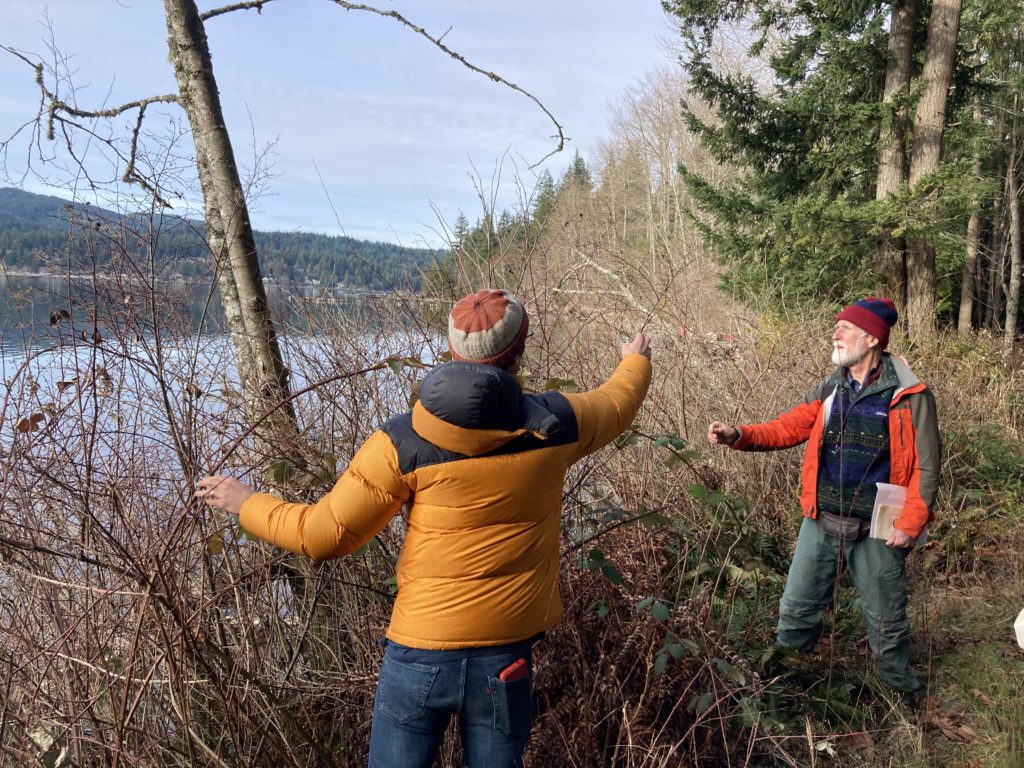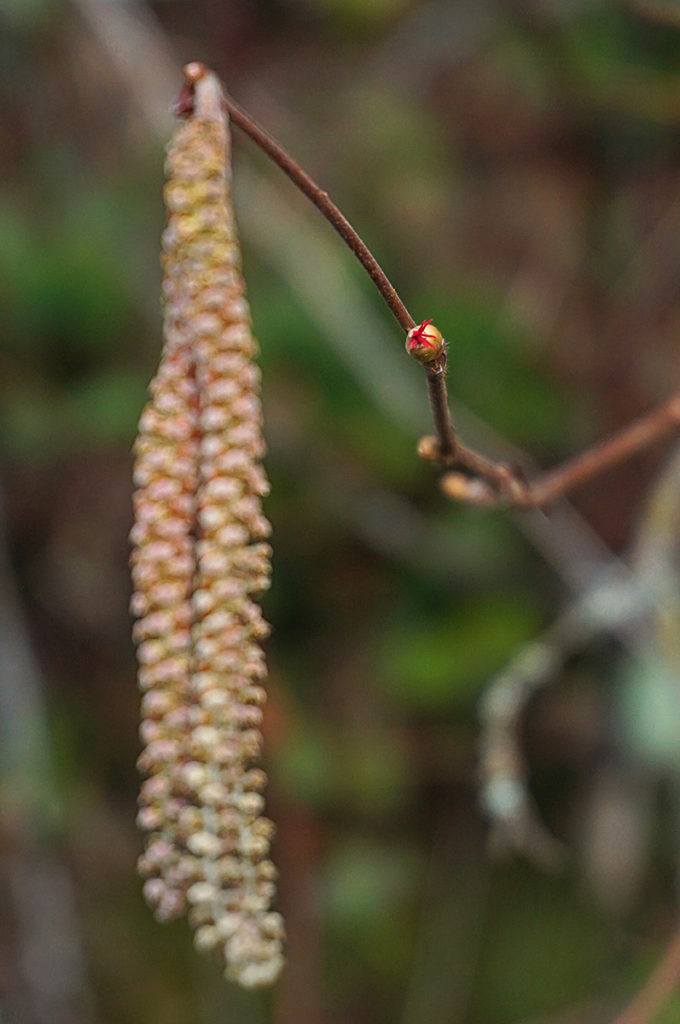
On February 10th the Koma Kulshan Chapter hosted a terrific field trip focused on the identification of native deciduous trees and shrubs based on the characteristics of twigs and buds. Led graciously by Abe Lloyd and Allan Richardson, a group of 16 ambled alongside the shore of Lake Whatcom, taking in an array of native (and non-native) species. Among these were all three of our region’s native maples, various members of the Rubus genus, serviceberry, black cottonwood, aspen, paper birch, and even a group of Garry oaks!
Many of these species were likely familiar to the attendees and might be readily identified during the growing season, but in this context we were afforded the opportunity to look more deeply for defining characteristics without the aid of familiar leaf shapes and flowers. Although much attention was paid to bud arrangements, bud scales, leaf scars and other characteristics of exposed leafless twigs, this field trip also gave us an opportunity to observe a broad range of helpful details and even employed our sense of smell in the case of the unmistakably pungent odor of a freshly broken cottonwood twig. Observing the terrain, hydrology, companion species, textures and colors of bark, decaying remnants of fallen leaves, and the stature and form of trees all filtered into the process of identification.
Among the most memorable sightings were the tiny but bright-magenta pistillate female flowers of our native beaked hazel, Corylus cornuta, nearly hidden among the much more visible male (staminate) catkins. The promise of spring was in evidence everywhere in swollen buds and in the elegant, pendulous osoberry blossoms already beginning to reveal themselves. It was a great day for deepening our appreciation of the beauty and wonder of native plants!
-Alika Herreshoff
Photos by Evan Johnson and Alika Herreshoff

